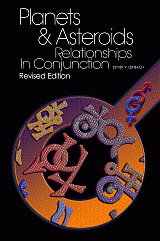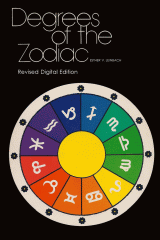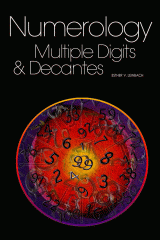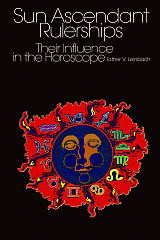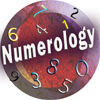by Esther V. Leinbach
Revised & Edited by Kevin Leinbach
Available Now! $4.99 (eBook), $17.99 (Paperback)
Forward to the Revised Edition
My mother, Esther V. Leinbach, wrote this book over 40 years ago, when I was 13 years old. Before this book was even published, she taught me how to set up a horoscope in order to calculate degree positions so that I could use the book on my own. I have been using this book ever since.
This is the first of 5 books that she wrote and it includes the foundations of her personal philosophical approach to both Psychology and Astrology as well as her approach to faith and religion. Her ability to express those concepts evolved over many years and we discussed them at length in our work together. In revising these descriptions, I have relied heavily on those countless conversations.
I have also spent a great deal of time reviewing her writing and research materials. When she began studying Astrology she created a card file containing various typewritten notes and source material. About 1/3 of this collection contains the degree information that she used to write this book. Early on, when there was something I didn't understand, I had the luxury of simply asking her about it. Now, I have her card file which I have used extensively in working on the revisions to this book.
When I read these degrees aloud to a friend or client, I have often dropped a sentence, added a sentence, changed emphasis, changed a word or the gender pronouns and generally sought to clarify the thought or concept that mom was seeking to communicate. I have taken the same approach in revising this work.
In some cases, the original descriptions have been left virtually intact. In others, after going back to the sources, what seemed to be missing elements within a more current context have been brought forward. In yet other descriptions, the overall structure has been revised, rebuilding the emphasis in order to be more concise in describing the challenges and abilities that are indicated. Some of the so-called “no-hope degrees” have been amended in order to note particular instances we have seen that point to more positive expressions.
Also, almost all gender specific references in the descriptions have been removed. An unusual device has been employed that is intended to remind the reader that these descriptions are not gender specific. It is a universally accepted convention that any general reference to an individual is given as the male pronoun. This convention has been abandoned. For example, an original description would have been written: “A Taurus may be stubborn but he is also patient in pursuing his course”. I have replaced this with: “A Taurus may be stubborn but s/he is also patient in pursuing his/her course”. This may seem cumbersome to read silently or appear a bit cluttered on the printed page. Nevertheless, this device has been useful in reading the descriptions aloud to clients and has been employed in this revision.
Degree influences have often been seen as ethereal and mysterious, relying on symbolism to suggest potential expressions. This book was originally written to bring the symbolism into a descriptive, practically applicable format that can more easily be used in chart interpretation. This approach is psychological rather than symbolic. But the advantage of symbols is that they can be interpreted in the current context directly. When particular references are made to current insights or methods, there is some danger that the descriptions can become outdated. In the original descriptions in this book, it was occasionally pointed out that new expressions are possible as humanity evolves. The revisions that have been made are primarily intended to update the descriptions with a current perspective and incorporate a context or evolutionary perspective that was simply not in place 40 years ago.
– KEVIN LEINBACH
February 2012

